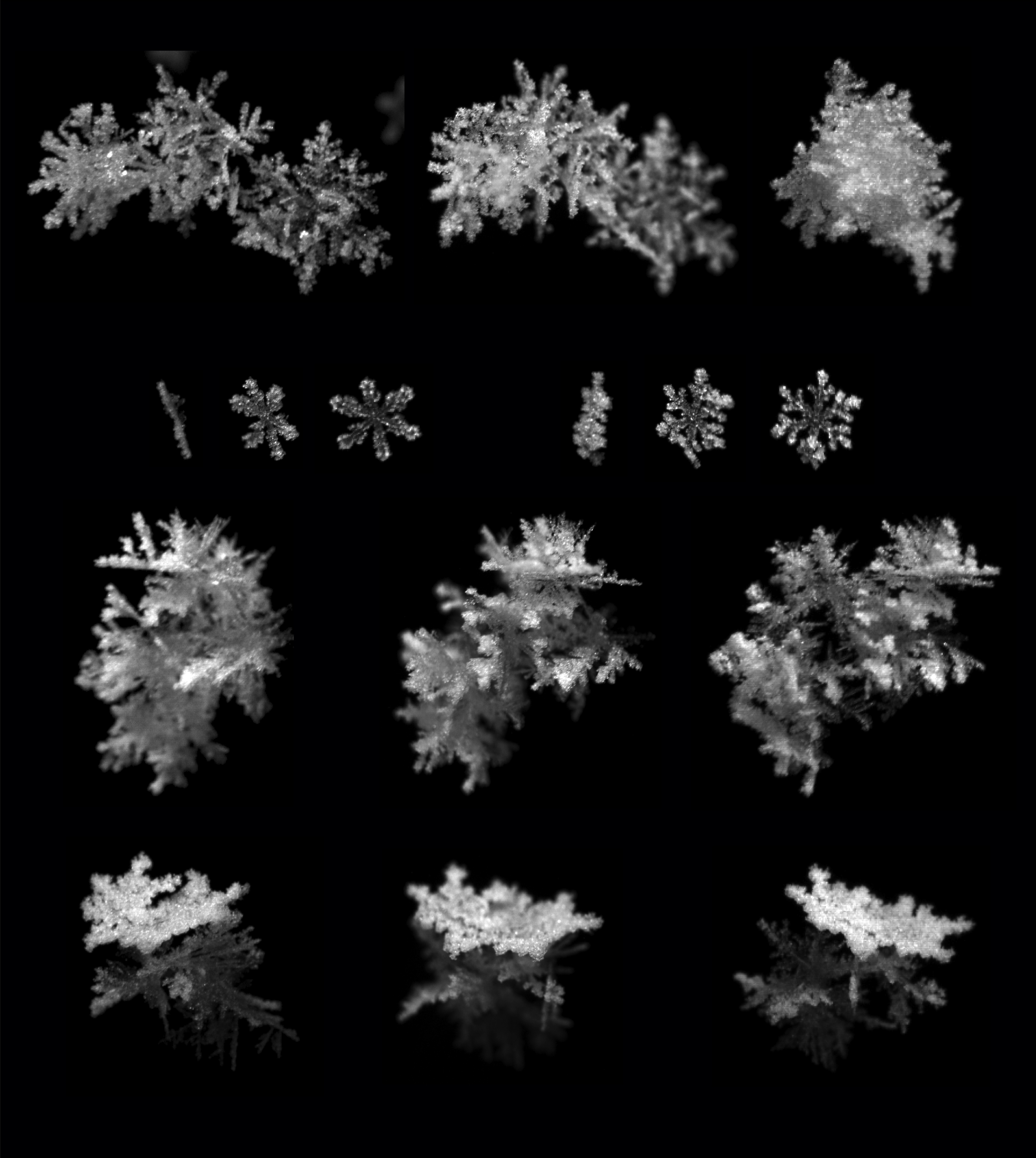
Super Cool: 3D Photographs of Snowflakes

No two snowflakes are alike — but you've never seen them quite like this.
A new device can take 3D photographs of snow as it falls through the air, revealing a diverse array of shapes that mostly look completely different than the 2D representations we're used to seeing.
"Until our device, there was no good instrument for automatically photographing the shapes and sizes of snowflakes in free-fall," said Tim Garrett, an atmospheric scientist at the University of Utah, in a release from the school. "We are photographing these snowflakes completely untouched by any device, as they exist naturally in the air."
Typically, snowflakes in photographs "tend to be of a particular type that conveniently lies flat on a microscope slide, where a camera can get them perfectly in focus, and the photographer can take the time to get the light exactly right," Garrett said.
But these symmetric snowflakes are quite rare, perhaps one-in-a-thousand, he said. "Snow is almost never a single, simple crystal. Rather, a snowflake might experience 'riming,' where perhaps millions of water droplets collide with a snowflake and freeze on its surface. This makes a little ice pellet known as 'graupel.' Or snowflakes collide with other snowflakes to make something fluffier, called an aggregate. And everything is possible in between," Garrett added.
The patent-pending device, called the Multi-Angle Snowflake Camera, includes three high-speed cameras, plus two motion sensors to detect the speed of falling flakes, according to the release.
The photographs and data collected by the device will help improve computer simulations of falling snow, which could improve weather predictions, the release noted. Snowflake shape affects how weather-forecasting radar interacts with the snow, and incomplete data about the diversity of shapes can cause errors in forecasting snowfall amounts and locations.
Get the world’s most fascinating discoveries delivered straight to your inbox.
"Snowflakes are beautiful and fascinating, and truly no two are alike," Garrett said. "This complexity almost makes them worth studying in their own right. But also, there are very serious practical reasons why we need to understand snow better."
Email Douglas Main or follow him @Douglas_Main. Follow us @OAPlanet, Facebook or Google+. Original article on LiveScience's OurAmazingPlanet.
 Live Science Plus
Live Science Plus








